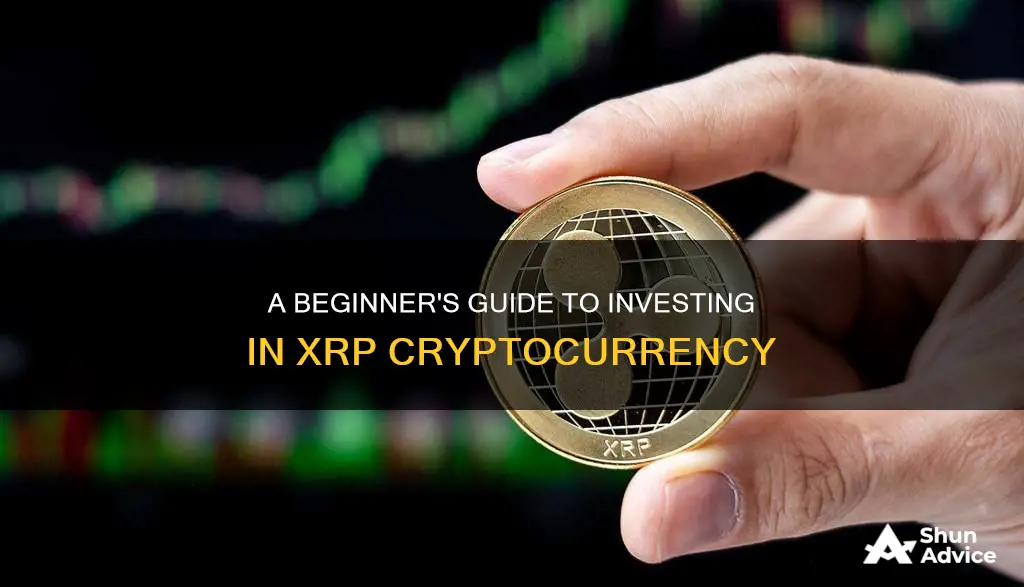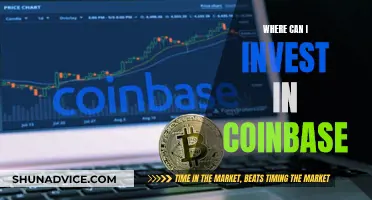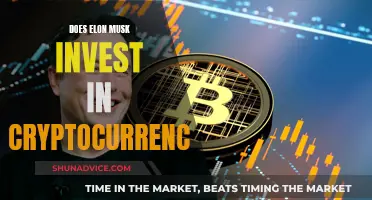
XRP is a blockchain-based asset that operates on its own blockchain, the XRP Ledger (XRPL). It was created by Ripple in 2012 and is used by the company in specific ways, but it has stated that the asset and its blockchain are independent of it. XRP can be used as a payment vehicle or as a speculative asset.
XRP is an affordable cryptocurrency, and its low price makes it a desirable coin. It is also highly volatile, making it attractive to day traders. However, it has been the subject of legal issues, including a lawsuit filed by the U.S. Securities and Exchange Commission (SEC) in 2020, which alleged that the company had conducted an unregistered securities offering by selling XRP to investors.
If you are considering investing in XRP, you will need to decide on a payment method and a platform. You can buy XRP with fiat currency or trade another cryptocurrency for it. Popular platforms for buying XRP include Bitfinex, Bitstamp, Huobi, Kraken, Coinbase, and Uphold.
What You'll Learn

Choosing a crypto exchange
- Authenticity and Security: It is crucial to ensure that the exchange is legitimate and secure. Research the reputation of the platform and the security protocols they have in place to protect your data and funds.
- Payment Options: Different platforms support different payment methods, such as bank transfers, PayPal, credit/debit cards, or cryptocurrency. Choose an exchange that offers a payment method that suits your needs.
- Supported Coins and Tokens: While most exchanges support Bitcoin and Ethereum, consider whether you want to invest in other cryptocurrencies. Binance, for example, offers access to a wide range of coins and tokens.
- Transaction Fees: Understand the fee structure of the exchange, as fees can vary significantly between platforms. Look for transparent fee structures without hidden costs.
- User Interface and Experience: An exchange with an intuitive interface and good user experience will make it easier to trade cryptocurrencies. Check customer reviews and the availability of customer support to get an idea of the overall user experience.
- Regulatory Compliance: Ensure that the exchange complies with regulatory requirements, especially if you are based in the US. Some exchanges may not be licensed to operate in certain states or countries.
- Advanced Features: If you are an experienced trader, look for exchanges that offer advanced features like margin trading, futures trading, and volume discounts.
- Reputation and Reviews: Research the reputation of the exchange and read reviews from other users. This can give you insights into the reliability, security, and overall user experience of the platform.
- Withdrawal Options: Consider the withdrawal options offered by the exchange. Some exchanges may charge fees for withdrawing coins from their platform, so it is important to understand these costs.
Some popular crypto exchanges that you can consider include Binance, Coinbase, Kraken, CEX.io, Pionex, Bitfinex, BitGlobal, and Bitstamp. Each exchange has its own strengths and features, so evaluate them based on your specific needs and requirements. Remember to always do your own research and understand the risks involved before investing in cryptocurrencies.
Dash Coin: A Smart Investment Choice?
You may want to see also

Payment methods
There are several ways to pay for your XRP. You can buy it with fiat currency (e.g. US dollars, euros, or Japanese yen) or trade another cryptocurrency for it. Some exchanges will also let you pay with a credit or debit card, or via bank transfer.
If you're using a centralized exchange, you'll typically send fiat money to the exchange via bank transfer and then use those funds to buy XRP.
If you already own cryptocurrency, you could trade it for XRP. However, be aware that not all exchanges accept all cryptocurrencies, and some cryptos can't be traded with one another.
You can also buy XRP peer-to-peer, which means purchasing it directly from another party. This can be done in person, but it's important to only do this with someone you know, as it can be dangerous to meet strangers and conduct financial transactions with them.
Another option is to use a decentralized exchange, which facilitates crypto buying and selling without a third-party intermediary.
Best Bitcoin Stocks: Where to Invest Your Money
You may want to see also

Storing your XRP
As a crypto asset, XRP can be stored in a number of different wallet types. The wallet you choose will depend on various factors, including your Bitcoin experience and anticipated investment size. It's important to note that all XRP wallets must hold at least 20 XRP due to the way the XRP Ledger (XRPL) runs. This minimum limit is also subject to change based on blockchain voting.
Hardware wallets: These are a common digital asset storage method in the crypto industry. Hardware wallets store the private keys to your assets and allow you to interact with the wallet without exposing your private data. As XRP is one of the most significant crypto assets by market capitalization, several hardware wallets are compatible with the XRP coin. These wallets also come with recovery phrases or seed phrases that allow you to manually restore your wallet holdings if you lose access. It's important to keep these phrases secure and private.
Desktop and mobile wallets: Desktop wallets are programs or apps downloaded to your computer to store and manage your crypto assets. Mobile wallets are similar, but they run on your mobile device. Both options provide a good balance of security and ease of use, especially for first-time users or those looking to store a small quantity of XRP. However, it's important to exercise caution when choosing and downloading wallet software due to the risk of viruses, fake apps, or other malicious efforts to steal your crypto.
Exchange wallets: Crypto trading platforms, such as Crypto.com and Coinbase, also offer the ability to store XRP. Each asset on these exchanges has its own wallet location, and they typically have customer support teams to assist you. However, centralized crypto exchanges can be attractive targets for hackers, and you may have less freedom in terms of asset movement and control.
Paper wallets: Paper wallets allow you to print out the essential details of your crypto-asset, such as the wallet address and private key, and store them in a safe place. While this method offers a simple offline storage solution, it may leave you more susceptible to phishing efforts and other avenues of asset loss. Additionally, paper wallets are not as durable as other wallet forms and can be clunky to interact with.
Regardless of the storage method you choose, knowledge and understanding are crucial for the safe storage of your XRP. Learning how to send and receive XRP, knowing crypto security practices, and researching reputable products are all important components of effectively managing and interacting with your XRP holdings.
A Beginner's Guide to Investing in Crypto with Scottrade
You may want to see also

Pros and cons of investing in XRP
Pros of Investing in XRP
XRP is the third-largest cryptocurrency in terms of market cap, only surpassed by Bitcoin and Ethereum. It has a capable team behind it and is valued at $0.325557 per coin, making it an attractive option for investors looking to buy multiple coins. Here are some more advantages of investing in XRP:
- Ready for Adoption: The XRP protocol has been piloted with Ripple's xRapid product, and the results show that it is cheaper and faster than many other cryptocurrencies. It takes less than three minutes to complete a transaction, and it can save between 40%-70% in costs. Its network is also highly scalable, and it has the potential to be adopted on a global level.
- Partnerships: XRP has partnered with numerous financial institutions and major banks, indicating that the coin has real value and won't disappear. These partnerships also suggest that the coin's value will skyrocket once the proper conditions are met.
- Low Price and Stability: XRP is very cheap, and investors can get multiple coins for less than $1. While XRP has been accused of being centralized due to its design, it has been stable and reliable, making it attractive to banks and financial institutions that need security in the form of stability.
- Fast and Cost-Efficient: XRP aims to provide a platform for cross-border payments that is faster and more cost-efficient than its competitors. While larger cryptocurrencies like Bitcoin and Ethereum can be much slower, XRP can handle upwards of 1,500 transactions per second. Additionally, transaction fees for XRP are typically a small fraction of a penny, making it one of the more cost-friendly blockchain networks.
- Clear Use Case: XRP is the only digital asset with a clear use case – it is specifically designed for payments and financial institutions. Its pricing model includes software license fees, professional services, and transaction fees.
Cons of Investing in XRP
Despite its potential, there are several risks and drawbacks to consider before investing in XRP:
- Limited Use: XRP is mostly entering partnerships with banks and financial institutions, which are not keen on using cryptocurrencies. This means that Ripple is only usable on xRapid to provide liquidity when needed. The widespread adoption of cryptocurrencies by banks and financial institutions could change this, but that future is uncertain.
- Regulatory Uncertainty and Controversy: There have been concerns that XRP will be proclaimed a security by the US SEC, and lawsuits have been filed against its parent company, Ripple Labs, alleging that the company controls the coin and that it is centralized. While Ripple has denied these allegations and won some battles, many people remain unconvinced of the coin's decentralization, which has slowed its progress.
- Competition: There is a threat of more innovative payment systems being developed, which could offer more attractive alternatives using different coins. This could substantially reduce the amount of money being transferred via XRP or even wipe out its usage completely.
- Government Regulations: Unfavourable government regulations or even a ban on cryptocurrencies could negatively impact the value of XRP.
- Bank Cryptocurrencies: Many banks and financial institutions have started developing their own cryptocurrencies for interbank transactions, which could reduce the demand for XRP.
Caw Coin: A Smart Investment Move?
You may want to see also

XRP price prediction
XRP is a blockchain-based asset that was born in 2012 and operates on its own blockchain, the XRP Ledger (XRPL). It is touted as a better way to send money across borders, with faster transaction times and lower costs compared to traditional methods.
The price of XRP has been volatile, with the token recently dipping to a local bottom of around $0.53, a 7% drop over two weeks. However, as of September 2024, it is showing signs of recovery, trading above key resistance levels such as $0.5280, $0.5320, and $0.5350.
Some analysts are optimistic about XRP's potential for a major breakout. Crypto advocate Levi, for example, believes that XRP is in an accumulation phase, and this could offer a good opportunity for investors to buy before a potential surge. Another crypto analyst, Dark Defender, shared a chart showing that XRP has already surpassed the 23.6% level at $0.3941, and if it breaks above the next important levels of 70.2% ($0.6640) and 100% ($0.9327), it could indicate strong bullish momentum.
On the other hand, if XRP fails to surpass the $0.540 resistance zone, it may face a decline, with initial support around $0.5320 and further support at $0.5225.
As of now, XRP is trading at approximately $0.53, with a market cap of $29.9 billion. While it is difficult to predict the future market price of cryptocurrencies, XRP's current indicators suggest the possibility of an upcoming breakout.
Small Bitcoin Investments: Worth the Risk?
You may want to see also
Frequently asked questions
XRP is a blockchain-based digital asset that operates on its own blockchain, the XRP Ledger (XRPL). It was created by Ripple in 2012 and is used by the company in specific ways, but it has stated that the asset and its blockchain are independent of Ripple.
You can buy XRP on a centralized or decentralized cryptocurrency exchange. Before selecting an exchange, research the costs and accepted payment options. Choose a payment method and place an order for the desired quantity of XRP. Select a storage wallet, such as a hot or cold wallet, to keep your cryptocurrency holdings.
XRP is subject to an ongoing SEC investigation into whether it is an unregistered security. This has resulted in many exchanges, including Binance and Coinbase, suspending trading on XRP. There is also a risk that XRP could be affected by trends and online hype, making it a volatile asset.
XRP is an affordable cryptocurrency with a relatively high market cap, indicating investor confidence. It is also highly liquid, with a daily trading volume of over $5 billion. XRP is also environmentally friendly as it uses a consensus model instead of a proof-of-work model.







